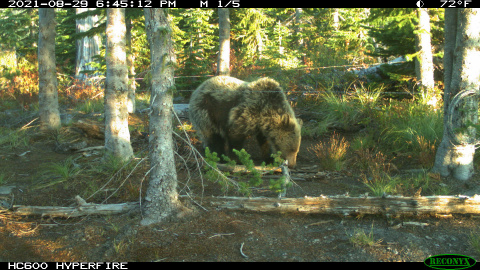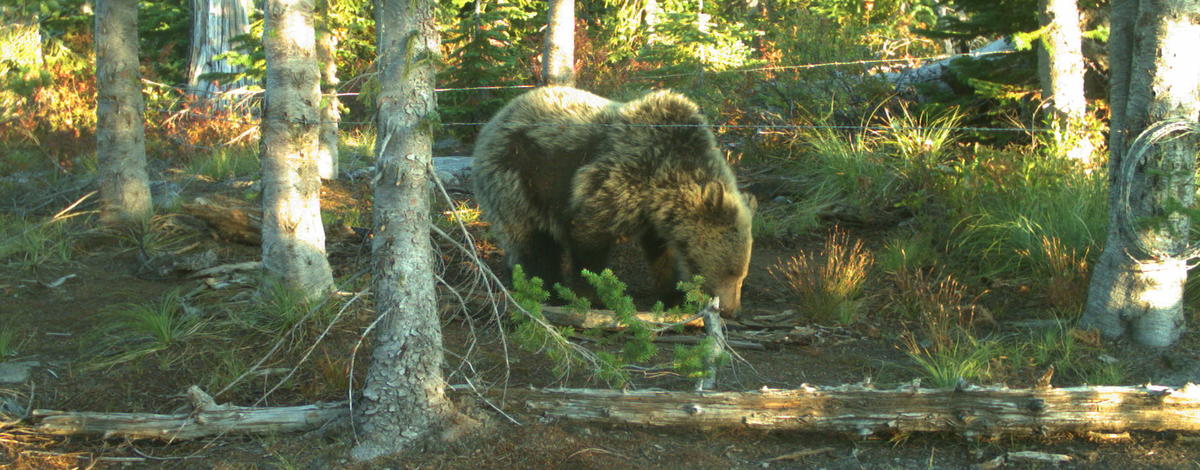Spring brings lots back to life after a cold, dark winter, including grizzly bears. Idaho Fish and Game Staff in the Panhandle Region have confirmed the presence of a grizzly sow and cub in the area of Johnson Saddle in Game Management Units 4A/4.

Although grizzly bears are most commonly observed in the Cabinet and Selkirk mountain ranges in GMU 1, they have also been infrequently observed in units 2, 3, 4, 4A, 6, 7 and 9. Black bears, on the other hand, are common throughout all GMUs in the Panhandle.
Spring 2022 has been busy on the grizzly bear front, with livestock-grizzly encounters in the Panhandle and recent human-grizzly interactions in the Upper Snake Region.
All of this activity serves as a timely reminder of the need to be bear aware – both while recreating in the woods and while living in close proximity to wildlife. Read on for some helpful tips on both fronts.
Tips for safely recreating in bear country
- Carry bear spray and keep it accessible and within reach
- Hunt with partners and make each other aware of plans
- Look for grizzly bear sign, including fresh tracks, scats, digs and carcasses or gut piles
- Be sure of your target before shooting a bear
- Retrieve game meat as quickly as possible and approach the carcass carefully and loudly
- Hang meat, food and garbage at least 200 yards from camp, 10 feet off the ground and 4 feet from the vertical support
- When not hunting, make noise, especially around creeks and thick vegetation. Most attacks occur by inadvertently surprising a bear at close range
Tips for safely living near wildlife
- Properly dispose of attractants, including trash, animal carcasses, compost, livestock feed and beehives.
- Securely store food, garbage and other attractants in a bear-resistant place.
- Keep pet food secured as you do your own. Bears like pet food as much as your pet does.
- Avoid filling bird feeders until wintertime.
- Do not bury or throw garbage into the nearby woods.
- Make sure to clean your grills and keep them in a building, if possible.
Know your bears
With spring bear hunting season well underway, hunters are encouraged to review their bear identification skills to avoid mistaken identity.
Size and color of the animal are not reliable indicators of species. It’s best to look at multiple features in order to make the right call. Grizzlies typically have short, rounded ears, a dished facial profile, a prominent shoulder hump and 2-4 inch long claws.
If you’d like to freshen up you bear identification skills, you can do so through our quick online training.

Please contact the Panhandle Regional office at (208) 769-1414 if you have any questions.
Follow us on the Panhandle Region Facebook page for regular updates and news.

